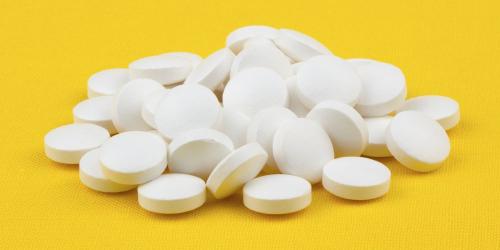No, it's not science fiction. At Episkin, a predictive research and evaluation center affiliated to the L'Oréal Group, reconstructed human skin is manufactured.
Why ? How? Immersion in laboratories based in Lyon.
Episkin: a first reconstituted skin kit in 1994
The L'Oréal Group has not tested any finished products on animals since 1989, twenty years before the ban of this type of test to all European countries.
In terms of ingredients, the group took the bandwagon in March 2013, when cosmetic ingredient testing, as well as the export and marketing of cosmetics containing ingredients tested on animals, were officially banned throughout Europe.
It therefore seemed logical that L'Oréal buys Episkin, a cutaneous engineering company that created the first reconstituted skin kit in 1994.
In 2006, the group acquired its direct competitor, Skinethic, and the two companies merged in 2014 to offer the widest possible range of reconstructed skins.
Rebuilt skin: a #crueltyfree alternative that exports
In 2015, the group opens a new branch in China, Shanghai Episkin Biotech. The goal: no longer having to import reconstructed skins (considered as products of biological origin) in the country for reasons of difficult conservation, but especially to inspire and train the authorities not to test animals in the years to come .
Indeed, it is impossible for the brands to export and sell their cosmetic products in the Chinese territory without the health authorities of the country first testing them on animals. In fact, the L'Oréal Group is still testing (indirectly) several of its animal products in China (with the exception of shampoos, shower gels and make-up).
The L'Oréal Group is not the only company to benefit from Episkin technology, the reconstructed skins are sold to academic and industrial partners (chemical, pharmaceutical, veterinary industries) in order to position themselves as a pioneer.
In addition, L'Oréal created the Episkin Academy, a training school to help and assist toxicologists in the use of reconstructed skin.
How do you rebuild a skin in the lab?
The famous reconstructed skins are shaped within the "clean rooms".
 Photo credit: Aurélie Sogny
Photo credit: Aurélie Sogny
These parts in which the security measures are very advanced (scientists enter without any clothing or makeup and must wear suits, gloves and goggles), are used to create different types of reconstructed tissue:
- The epidermis: EpiSkin, EpiSkin / SkinEthic RHE, SkinEthic RHPE (a pigmented epidermis).
- The complete skin (epidermis dermis): T-Skin.
- The mucous membranes: gingival, vaginal, oral and cornea.
 Photo credit: Aurélie Sogny
Photo credit: Aurélie Sogny
To do this, Episkin recovers surgical waste (breast hypertrophy and belly skin) from Lyonnaise clinics.
The scientists then separate the dermis and the epidermis to isolate the keratinocytes, the main cells that make up the epidermis. These are cultured (either on a collagen matrix or on a polycarbonate membrane) in products found in our body (water, sugar, amino acids), then placed in the hot (37 °), in an incubator, for 8 days to multiply and form what is called a tissue mat.
A few days later (the time differs depending on whether you make a mucosa, an epidermis or a complete skin), a stratum corneum is formed on the surface of the epidermis.
The skins are then in the form of rounds very flexible and resistant, placed in wells (by 6 or 12). They are ready for testing.
Here no stock, production is on demand. In total, Episkin produces about 100,000 units of reconstructed skin a year.
What tests are the skins used for?
Each reconstructed skin is used to perform dozens of safety tests ( discomfort, corrosion, skin / eye irritation, phototoxicity, allergy) and effectiveness (contact with UV to measure the reliability of the SPF of a solar product, efficiency an anti-aging cream)
Ingredients, formulas and finished product are tested directly in two laboratories.
 Photo credit: Aurélie Sogny
Photo credit: Aurélie Sogny


